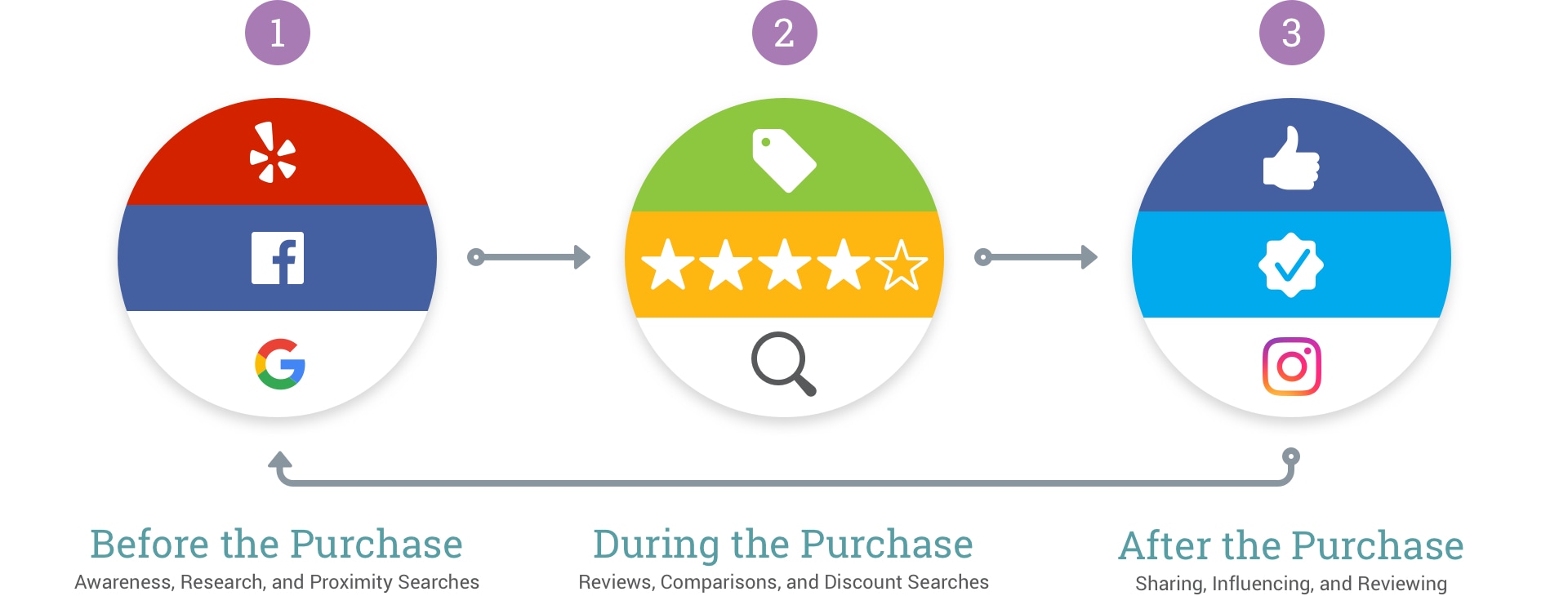Why the best new browsing buddy is your device.
If you’ve been out on a shopping spree recently, you might have noticed that most people almost never shop alone anymore. Whether they have a group of friends with them, or they’re out on a family trip, customers seem to always be accompanied by their trusty mobile phone. In fact, 77% of Americans now own a smartphone, making these devices a nearly indispensable part of the shopper’s journey. But what is everyone doing with their phone while shopping? Are we really that attached to our devices, or do they serve a greater purpose while browsing racks of clothes and new electronics?
Obviously, We Love Our Technology
Research shows that we are becoming increasingly reliant on mobile technology (if you couldn’t already tell). A recent Deloitte study of mobile phone users between the ages of 18 and 44 revealed that 43% of respondents check their phones within 5 minutes of waking, and 50% check their phone sometime in the middle of the night. What’s more, those surveyed reported checking their phones approximately 47 times per day. Topping the list of most popular activities was using their mobile device while out shopping, and while at work.
The question isn’t how shoppers interact with their phones in retail stores, but rather, how much? Many shoppers use their phone before they even get to the store to make a purchase, then again at the location, and continue even after the purchase is completed. All three individual phases are part of the total buying experience, and the key to capitalizing on your customers’ phone usage is to understand how smartphones play a vital role.
Understanding The Three Phases of Buying, and How the Mobile Phone Enhances Them

Phase 1 – Before the Purchase
There’s no shortage of things to shop for. Maybe you read a great review article, or perhaps you heard about it on social media through a friend or family member. Once you become aware of the item and are interested in buying, you’ll probably do research of some sort.
- How are the reviews?
- Is the item in stock near me?
- What are the store hours and directions to the location?
Online reviews have become an incredibly important step in the buying decision. So much so that 82% of U.S adults say they at least sometimes read online ratings or reviews before purchasing items for the first time, and 50% of adults under 50 regularly check online reviews.
Phase 2 – During the Purchase
Now that you’re ready to make a purchase, do you order online or buy in the store? While 79% of Americans report buying online, two-thirds of those consumers generally prefer to buy in a physical location. The ability to see, touch, and feel items – and the immediate gratification that follows – were cited as the most compelling reasons to choose a brick and mortar location over online shopping.
So, you’ve used your phone to find it nearby, get directions, and make the trek to that particular business. Once you are in the store, you’ll probably keep your phone out to scan a QR code for additional product information, or snap a picture to get the input of a friend or family member. Many shoppers also used their phone to:
- Search for a coupon or discount.
- Look up product benefits, ingredients, and guarantees.
- Pay for the product at checkout.
As a business, are you ensuring that your website, loyalty programs, and SMS campaigns are designed around supporting the customers’ use of their phone during the buying process? From linking product QR codes to your business’ website or product pages, down to having ways for the customer to interact with your business via SMS or social media while in the store, you can ensure more customers go from window shopping to raving about their recent purchase online.

Phase 3 – After the Purchase
With item(s) in hand, you leave the store excited about your purchase. So excited that you might want to share the product on social media, post your own personal review, or even recommend to (or possibly dissuade) others. While nearly 40% of U.S. adults have expressed their feelings about companies or products on social media, research shows that consumers are more likely to post about their feelings following a positive experience (86%) than one that is negative (77%).
Those positive product reviews are likely to be seen and shared by the seven in ten Americans using social media. Each post that your customers make following a purchase experience – whether a review on Yelp or a picture with their new gadget on Instagram – helps lead new customers back to Phase 1 of the purchase experience, where awareness of this new product perpetuates the cycle and solidifies the integration of smartphones as part of the ideal shopping experience. Keeping it simple for your customers to interact with your products, and your business, will help keep this process working like a well-oiled machine.

